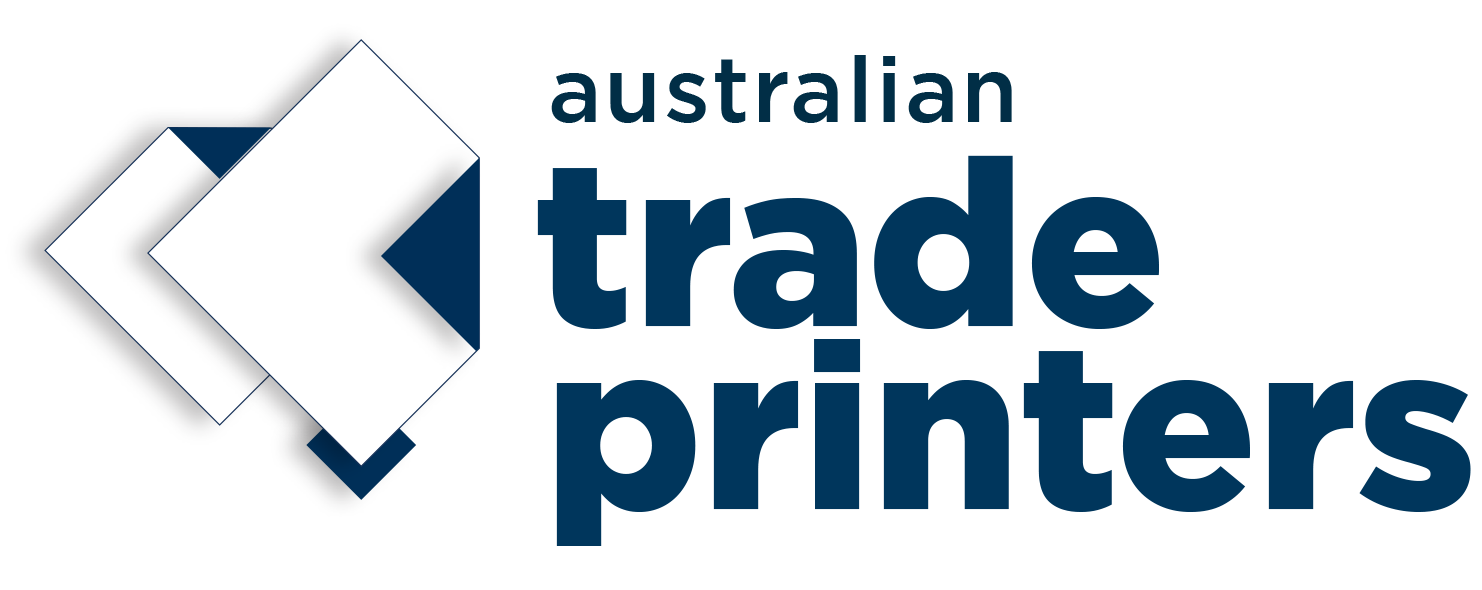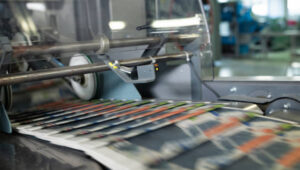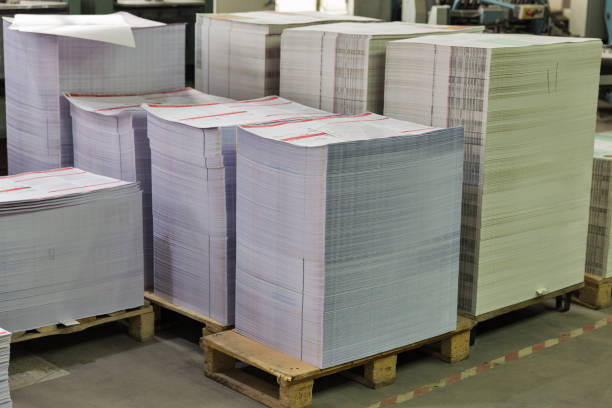
Welcome to our article on integrating wholesale print into your marketing strategy. In this section, we will explore the benefits of using wholesale print and how it can enhance your marketing efforts. Through a case study approach, we will provide real-life examples of successful integration and highlight the importance of effective communication across different marketing channels. Whether you’re a small business or a large corporation, this article will provide valuable insights on how wholesale print can help you achieve your marketing goals. Let’s dive in!
Understanding Integrated Marketing Communication (IMC) and Wholesale Print
In today’s fast-paced and competitive business environment, integrated marketing communication (IMC) has become a key strategy for companies looking to effectively reach their target audience and drive business growth. IMC involves the seamless coordination of various communication tools and channels to deliver a cohesive and impactful message.
What is Integrated Marketing Communication?
Integrated Marketing Communication refers to the strategic integration and coordination of all marketing communication elements to effectively communicate a consistent brand message to target audiences. It involves combining various promotional tools such as advertising, public relations, direct marketing, personal selling, and digital marketing to create a unified and seamless brand experience for customers.
With IMC, companies can leverage the different strengths of each communication tool, allowing them to deliver a compelling message that resonates with their target market. By aligning all marketing efforts, businesses can create a consistent brand image, enhance brand recognition, and foster customer loyalty.
The Role of Wholesale Print in IMC
When it comes to marketing collateral, wholesale print plays a vital role in the overall IMC strategy of businesses. By utilizing wholesale print, companies can create visually appealing and impactful marketing materials that effectively communicate their brand message.
Wholesale print offers businesses a cost-effective solution for producing marketing collateral in large quantities. Whether it’s brochures, flyers, business cards, or promotional posters, wholesale print allows companies to create high-quality materials that align with their brand identity. The use of tactile and tangible marketing materials can help businesses establish a strong connection with their target audience, making their brand more memorable and engaging.
| Benefits of Wholesale Print in IMCExplanation | |
|---|---|
| Enhanced brand visibility and recognition | Wholesale print allows businesses to create consistent and visually appealing marketing collateral that increases brand visibility and recognition. |
| Targeted and personalized marketing materials | With wholesale print, companies can tailor their marketing collateral to specific target segments, creating a more personalized and impactful marketing approach. |
| Increased trust and credibility | Tangible marketing materials created with wholesale print can help build trust and credibility, as they demonstrate a commitment to quality and professionalism. |
| Effective offline marketing complementing digital efforts | Wholesale print provides an opportunity to integrate offline marketing efforts with online channels, creating a cohesive and comprehensive marketing strategy. |
By integrating wholesale print into their IMC strategy, businesses can strengthen their brand presence, engage their target audience, and ultimately, drive better marketing results.
Case Study: Effective Wholesale Printing Techniques

In this section, we will explore a fascinating case study that showcases the power of effective wholesale printing techniques. Through this case study, we will delve into different printing methods, materials, and finishes that can significantly enhance the visual appeal and effectiveness of marketing materials.
Wholesale printing offers businesses a cost-effective way to produce high-quality marketing materials in large quantities. By utilizing the right printing techniques, businesses can create impactful collateral that captures the attention of their target audience and effectively communicates their brand message.
Wholesale printing allows us to showcase the creativity and expertise of our design team. We can experiment with various techniques to create visually appealing and engaging marketing materials for our clients. It’s the perfect opportunity to push the boundaries and deliver outstanding results.” – Amy Johnson, Creative Director at PrintPro Solutions
One of the most commonly used printing techniques in wholesale printing is offset printing. This method uses plates to transfer ink onto paper, resulting in vibrant, high-quality prints. Offset printing is suitable for a wide range of marketing materials such as brochures, flyers, and business cards.
In addition to offset printing, digital printing is another popular technique in wholesale printing. Digital printing allows for quick and efficient production, making it ideal for short print runs and personalized marketing materials. With digital printing, businesses can easily customize their marketing materials by incorporating variable data such as names or unique codes for each recipient.
Innovation in printing materials and finishes also plays a significant role in enhancing the impact of wholesale printed materials. For example, using specialty papers can add a luxurious touch to marketing collateral, while adding finishes like spot UV coating or foil stamping can create eye-catching accents that draw attention to key elements of the design.
Let’s take a look at a table presenting some of the popular printing techniques, materials, and finishes commonly used in wholesale printing:
| Printing Technique | Printing Materials | Finishes |
|---|---|---|
| Offset printing | Standard paper, cardstock, specialty paper | Spot UV coating, foil stamping, embossing |
| Digital printing | Standard paper, cardstock | Glossy or matte finish |
| Large format printing | Vinyl, fabric, canvas | Grommets, hemming, mounting |
This table provides a comprehensive overview of the different printing techniques, materials, and finishes that businesses can consider when planning their wholesale printing projects. It’s important to carefully select the appropriate combination to achieve the desired visual impact and effectively convey the brand message to the target audience.
By utilizing effective wholesale printing techniques, businesses can create marketing materials that leave a lasting impression on their customers and give them a competitive edge. The case study in this section will provide real-life examples and insights into how businesses have successfully utilized wholesale printing to achieve their marketing goals.
The Importance of Print Quality in Marketing Collaterals
In this section, we will discuss the importance of print quality in marketing collaterals. High-quality print materials are crucial for creating a positive brand impression, attracting attention, and engaging customers effectively.
Insights into Trade Printing and Quality Control
Trade printing plays a vital role in ensuring that marketing collaterals meet the highest standards of print quality. By partnering with professional printing companies, businesses can benefit from their expertise and access to advanced printing technologies. These trade printers have the knowledge and resources to deliver exceptional print results that accurately represent the brand while showcasing the design elements with clarity and precision. Additionally, trade printing offers quality control processes to guarantee consistency and accuracy throughout the print run.
Partnering with a reputable trade printer not only ensures top-notch print quality but also saves time and resources in managing the printing process in-house.
To maintain print quality, trade printers employ rigorous quality control measures. These include checks for color accuracy, sharpness of images and text, proper paper handling, and overall print consistency. By adhering to strict quality control protocols, trade printers can minimize errors and deliver exceptional print quality on every marketing collateral.
Wholesale Print and Perceptions of Brand Value
One of the key benefits of wholesale print is its ability to enhance the perceptions of brand value. By producing high-quality marketing collaterals, businesses can convey a sense of professionalism, reliability, and attention to detail. The visual appeal and overall finish of print materials contribute significantly to how customers perceive the brand and its products or services.
When marketing collaterals are printed with care and precision, they create a positive impression that reflects the brand’s commitment to quality. Customers are more likely to trust and engage with a brand that presents itself professionally through visually appealing and well-crafted print materials. This ultimately contributes to the success of marketing campaigns and the establishment of a strong brand image.
Comparative Analysis of Print Quality Factors
| Print Quality Factors | Wholesale Print | In-House Printing |
|---|---|---|
| Access to advanced printing technologies | Yes | Depends on equipment and resources |
| Expertise in print production | Yes | Depends on knowledge and training |
| Quality control processes | Yes | Varies based on in-house protocols |
| Consistency and accuracy | High | Depends on internal management |
| Perceived brand value | Higher when collaterals are professionally printed | Varies based on print quality |
Wholesale Printing as a Competitive Edge

In today’s competitive marketplace, businesses are constantly searching for ways to gain a competitive edge and stand out from their competitors. One effective strategy that has proven to be a game-changer is wholesale printing. By utilizing wholesale print services, businesses can differentiate themselves and gain a marketing advantage.
Wholesale printing allows businesses to access high-quality print materials at affordable prices. This means that they can produce a wide range of marketing materials, such as brochures, flyers, business cards, and promotional items, without breaking the bank. With these professionally printed materials in hand, businesses can make a lasting impression on their target audiences.
One of the key advantages of wholesale printing is the ability to customize marketing materials to suit specific needs and preferences. Businesses can tailor their print materials to reflect their brand identity, messaging, and design aesthetics. This level of customization helps businesses create a memorable and cohesive brand image, setting them apart from their competitors.
Moreover, wholesale printing offers a quick turnaround time, allowing businesses to meet their marketing deadlines and stay ahead of the competition. With reliable printing partners, businesses can ensure that they have a steady supply of high-quality print materials whenever they need them. This means they can launch timely marketing campaigns, making a strong impact on their target audiences.
Let’s take a look at how some businesses have gained a competitive edge through wholesale printing:
“ABC Nutrition, a leading health and wellness brand, leveraged wholesale printing to create eye-catching brochures and pamphlets that showcased their products and services. By distributing these beautifully designed print materials across their target market, they were able to increase brand awareness, generate new leads, and ultimately drive sales.”
“New Home Realty, a well-established real estate agency, used wholesale printing to produce high-quality business cards and property brochures. The professional and visually appealing print materials helped them build trust and credibility, positioning them as a market leader. As a result, they attracted more clients and secured lucrative property deals.”
These are just a few examples of how businesses have harnessed the power of wholesale printing to gain a competitive edge. By investing in wholesale print services, businesses can elevate their brand image, communicate their value proposition effectively, and ultimately outshine their competitors.
| Benefits of Wholesale Printing as a Competitive Edge |
|---|
| Access to high-quality print materials at affordable prices |
| Customization options to reflect brand identity and messaging |
| Quick turnaround time to meet marketing deadlines |
| Creates a memorable and cohesive brand image |
| Increases brand awareness and generates new leads |
| Builds trust and credibility among target audiences |
Selecting the Right Trade Printer for Your Business
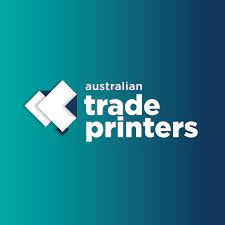
When it comes to choosing a trade printer for your business, there are several important factors to consider. Exceptional service and a wide product range are key elements that can make a significant difference in the success of your printing projects. In this section, we will guide you through the evaluation process and highlight the importance of sample packs and proofing in selecting the right trade printer.
Evaluating Printers for Exceptional Service and Product Range
Exceptional service is crucial when it comes to trade printing. You want a printer that not only offers high-quality products but also goes above and beyond to meet your specific needs and provide excellent customer support. Consider factors such as responsiveness, communication, and reliability when evaluating printers for exceptional service.
Additionally, the product range offered by the trade printer is an important consideration. Different businesses have different printing requirements, so it’s essential to choose a printer that can cater to your specific needs. Look for a trade printer that offers a wide variety of products, such as business cards, brochures, flyers, and promotional materials, to ensure that you can get all your printing needs met in one place.
Sample Packs and Proofing in the Selection Process
Sample packs play a crucial role in the selection process as they allow you to assess the print quality, paper stocks, and finishes offered by the trade printer. By requesting sample packs, you can get a firsthand look at the quality of their products and make an informed decision. Look for trade printers that offer sample packs so you can evaluate their work before making a commitment.
Proofing is another vital step in the selection process. It ensures that the final printed product meets your expectations and aligns with your brand’s standards. A trade printer that offers a thorough proofing process will collaborate with you to make any necessary adjustments and ensure that the final result is exactly what you envisioned.
By considering exceptional service, product range, and utilizing sample packs and proofing in the selection process, you can confidently choose the right trade printer for your business. Remember, finding the perfect trade printer can make a significant difference in the success of your printing projects.
Incorporating Wholesale Print into Your Business Strategy
In today’s competitive business landscape, it’s crucial to have a well-defined marketing strategy that encompasses both traditional and digital channels. One effective avenue to explore is incorporating wholesale print into your business strategy. By strategically aligning wholesale print with your business goals, you can enhance your marketing efforts and create a cohesive brand message. Additionally, integrating print jobs with digital campaigns allows you to reach a wider audience and maximize the impact of your marketing efforts.
Strategic Alignment with Business Goals
When incorporating wholesale print into your business strategy, it’s essential to ensure strategic alignment with your business goals. This means identifying how wholesale print can support and enhance your overall marketing objectives. Consider the target audience, messaging, and desired outcomes of your marketing campaigns. By aligning wholesale print materials with these goals, you can create consistent and impactful marketing collateral that resonates with your target audience.
For example, if your business goal is to increase brand awareness, your wholesale print strategy may focus on distributing visually appealing and informative materials such as brochures, flyers, or posters in strategic locations. On the other hand, if your goal is to drive customer engagement and loyalty, you may consider using personalized direct mail campaigns or branded promotional products.
By aligning your wholesale print strategy with your business goals, you can ensure that every print job serves a specific purpose and contributes to the overall success of your marketing efforts.
Integrating Print Jobs with Digital Campaigns
Successful marketing strategies often involve a mix of print and digital channels to engage target audiences effectively. Integrating print jobs with digital campaigns allows you to leverage the strengths of both mediums and create a cohesive marketing strategy.
Start by identifying how print materials can complement your digital campaigns. For example, you can use QR codes or personalized URLs on print materials to drive traffic to specific landing pages or track customer engagement. You can also incorporate print materials, such as branded materials or postcards, as part of your email marketing campaigns by including them in direct mailings or as inserts in product shipments.
By integrating print jobs with digital campaigns, you can create a seamless customer experience across different touch points, reinforce your brand message, and increase the effectiveness of your marketing strategies.
Digital and Offset Printing: Knowing When to Use Each
In the world of print technology, two popular methods stand out: digital printing and offset printing. Both methods have their advantages and disadvantages, making it essential for businesses to understand when to use each to achieve optimal results. Let’s take a closer look at the differences between digital printing and offset printing and explore the situations in which each technique shines.
The Advantages and Disadvantages of Digital Printing
Digital printing offers numerous benefits that make it a preferred choice for many businesses. Firstly, digital printing allows for quick turnaround times, making it ideal for projects with tight deadlines. Additionally, digital printing enables on-demand printing, meaning businesses can print smaller quantities as needed, reducing waste and inventory costs.
Moreover, digital printing provides excellent flexibility for customization, allowing businesses to personalize print materials with variable data printing. This feature is especially valuable for targeted marketing campaigns that require individualized content for each recipient.
Digital printing allows for quick turnaround times and on-demand printing, reducing waste and inventory costs.”
However, it’s important to consider the limitations of digital printing. While digital printing offers high-resolution results, it may not match the precise color accuracy and quality achieved by offset printing. Additionally, the cost per unit in digital printing can be higher for larger print quantities compared to offset printing.
The Advantages and Disadvantages of Offset Printing
Offset printing is a more traditional method that involves transferring ink from a plate to a rubber blanket, which then applies it to the printing surface. This method offers several advantages that remain valuable in the digital age.
One significant advantage of offset printing is its ability to produce consistent, high-quality results with vibrant colors and sharp details. This makes it an excellent choice for projects that demand precise color accuracy and intricate designs.
“Offset printing produces consistent, high-quality results with vibrant colors and sharp details.”
Furthermore, offset printing is generally more cost-effective for large print quantities. The more units printed, the lower the cost per unit becomes, making it an economical option for sizable marketing campaigns.
However, offset printing does have some downsides. The setup time for offset printing can be longer compared to digital printing, making it less suitable for projects with strict time constraints. Additionally, offset printing requires the creation of printing plates, which can increase the initial setup costs.
Knowing When to Choose Digital or Offset Printing
So, when should you opt for digital printing, and when is offset printing the better choice? Consider the following factors:
- Print quantity: Digital printing is ideal for small to medium print runs, while offset printing is more cost-effective for large print quantities.
- Print quality: If color accuracy and fine details are crucial, offset printing excels in delivering high-quality results. However, digital printing can still provide excellent quality for most applications.
- Project timeline: For projects with tight deadlines or on-demand printing needs, digital printing offers quick turnaround times, while offset printing may require more time for setup.
- Budget constraints: While digital printing may have higher costs per unit for larger quantities, it eliminates the need for setup costs associated with offset printing, making it a more affordable option for smaller print runs.
By considering these factors, businesses can make informed decisions about which printing method to choose based on their specific requirements, budget, and desired print quality.
| Factors | Digital Printing | Offset Printing |
|---|---|---|
| Print Quantity | Small to medium print runs | Large print quantities |
| Print Quality | Excellent for most applications | Precise color accuracy and fine details |
| Project Timeline | Quick turnaround times | Longer setup time |
| Budget Constraints | Higher costs per unit for larger quantities, no setup costs | Lower costs per unit for larger quantities, setup costs |
Ultimately, the choice between digital printing and offset printing depends on the unique needs of each project. By understanding the advantages and disadvantages of both methods and considering key factors like print quantity, print quality, project timeline, and budget, businesses can make informed decisions that maximize the impact of their print materials.
Creating a Cohesive Story Through Wholesale Print and Digital Media
In today’s competitive business landscape, it is essential for brands to create a cohesive story that resonates with their target audience. This involves integrating wholesale print and digital media to deliver a unified brand message across online and offline marketing channels. By blending these channels effectively, businesses can maximize the impact of their marketing efforts and enhance customer engagement. Let’s explore the benefits of this approach and examine a success story from Australian Trade Printers.
Blending Online and Offline Marketing Channels
Online and offline marketing channels each have their own strengths, and combining them can create a powerful marketing strategy. Wholesale print offers tangible, physical materials that can be distributed to customers, allowing for a more personal and memorable connection. Digital media, on the other hand, provides the opportunity to reach a wider audience online and engage with them through interactive content.
By blending these two channels, businesses can create a seamless brand experience for their target audience. For example, incorporating QR codes or social media handles on print materials can direct customers to online platforms for further engagement. This integration allows for consistent messaging, reinforcing the brand story and increasing brand recognition.
Case Study: Australian Trade Printers’ Success Story
Our goal was to create a cohesive story that highlighted the value and quality of our printing services,” says Sarah Thompson, Marketing Manager at Australian Graphics. “We realized that by integrating wholesale print with digital media, we could effectively convey our brand message and engage our target audience in a more impactful way.”
Australian Trade Printers implemented a multi-channel marketing campaign that showcased their wholesale print expertise while leveraging the power of digital media. They created visually stunning print materials that featured high-quality images and compelling content, demonstrating their commitment to excellence.
To connect the offline and online experiences, Australian Trade Printers integrated QR codes on their print materials, directing customers to a dedicated landing page. This page provided additional information, exclusive offers, and an interactive design tool to help customers visualize their print projects. As a result of this cohesive approach, Australian Trade Printers experienced a significant increase in customer engagement, brand awareness, and ultimately, business growth.
| Results | Metrics |
|---|---|
| Increase in customer engagement | 40% |
| Brand awareness | 60% increase in social media mentions |
| Business growth | 30% increase in sales |
This case study exemplifies how the integration of wholesale print and digital media can lead to a cohesive brand story and drive business success. By leveraging the unique strengths of each channel, businesses can create a memorable and impactful marketing strategy that resonates with their target audience.
Customization Options: Print Jobs Tailored to Client Needs

When it comes to wholesale printing, customization options play a crucial role in delivering print jobs that meet the specific needs and preferences of clients. By offering a range of customization options, businesses can create personalized and impactful marketing materials that resonate with their target audience.
One key customization option is the ability to choose different product sizes. Whether it’s flyers, brochures, or posters, businesses can select the dimensions that best suit their marketing objectives. By tailoring the size of print materials, they can ensure maximum visual impact and message delivery.
Finishing options are another aspect of customization that can elevate the quality and appeal of print jobs. From lamination and embossing to spot UV and foil stamping, businesses have the flexibility to add finishing touches that bring their print materials to life. These finishing options not only enhance the overall aesthetic but also create tactile experiences that captivate recipients.
Furthermore, the choice of paper stocks allows for customization based on the desired look and feel of the print materials. Whether it’s a sleek and sophisticated appearance or a rustic and eco-friendly vibe, selecting the right paper stock can help businesses align their print jobs with their brand identity and messaging.
By leveraging these customization options, businesses can ensure that their print materials effectively communicate their unique value proposition and resonate with their target audience. Customized print jobs demonstrate attention to detail and a dedication to meeting client needs, ultimately strengthening brand perception and customer engagement.
| Customization Options | Benefits |
|---|---|
| Different product sizes | Allows for maximum visual impact and message delivery |
| Finishing options | Enhances overall aesthetic and creates tactile experiences |
| Choice of paper stocks | Aligns print jobs with brand identity and messaging |
Overall, customization options in wholesale printing empower businesses to tailor their print jobs to the unique needs and preferences of their clients. By utilizing different product sizes, finishing options, and paper stocks, businesses can create personalized and impactful marketing materials that leave a lasting impression on their target audience.
Measuring the ROI of Wholesale Printing in Marketing
In today’s competitive business landscape, it is crucial for companies to ensure that their marketing efforts yield the desired results. One effective way to measure the success of these efforts is by evaluating the return on investment (ROI) of wholesale printing in marketing. By tracking metrics and performance of print materials, businesses can gain valuable insights into the effectiveness and cost-efficiency of their wholesale printing strategies.
Tracking Metrics and Performance of Print Materials
To accurately measure the ROI of wholesale printing, businesses need to track various metrics and evaluate the performance of their print materials. These metrics can include response rates, conversion rates, and overall customer engagement. By analyzing these metrics, businesses can assess the impact of their wholesale print campaigns and make data-driven decisions for future marketing strategies.
Tracking metrics can be done through several methods, such as using unique QR codes or personalized URLs on printed materials to monitor customer responses. Additionally, businesses can implement tracking pixels or unique coupon codes to track conversions from print materials. By combining these digital tracking methods with traditional tracking techniques like customer surveys or direct feedback, businesses can gather comprehensive data on the effectiveness of their wholesale print campaigns.
Case Studies of Cost-Efficiency and Impact
Real-world case studies provide tangible evidence of how wholesale printing can deliver cost-efficiency and impact in marketing campaigns. These case studies showcase successful examples of businesses that have implemented wholesale printing strategies and achieved remarkable results.
One such case study is the use of personalized direct mail campaigns by an online retailer. By utilizing variable data printing techniques for personalized offers and targeted messaging, the retailer achieved a significant increase in conversion rates, leading to a higher ROI compared to generic mass mailing campaigns.
Another case study involves a local restaurant that incorporated print flyers with QR codes into their marketing strategy. By tracking the number of scans and subsequent customer orders, the restaurant was able to determine the effectiveness of their wholesale print materials and optimize their marketing budget accordingly. Ultimately, this approach resulted in increased sales and improved cost-efficiency.
| Case Study | Cost-Efficiency | Impact |
|---|---|---|
| Online Retailer | High | Significant increase in conversion rates |
| Local Restaurant | Improved | Increased sales through targeted marketing |
The Future of Wholesale Print in the Marketing Mix
In today’s rapidly evolving digital landscape, the future of wholesale print in the marketing mix is an exciting and dynamic space. As businesses strive to stand out in a crowded marketplace, innovative strategies and emerging technologies are reshaping the way wholesale print is used as a marketing tool.
Innovations and Trends in Trade Printing
The wholesale print industry is experiencing a wave of innovations and trends that are revolutionizing the way businesses approach their marketing campaigns. One notable trend is the use of advanced printing technologies and materials. From environmentally friendly inks to bold and eye-catching finishes, trade printing is embracing cutting-edge techniques to provide businesses with high-quality print materials that leave a lasting impression on their target audience.
Another significant trend in trade printing is the emphasis on customization and personalization. Businesses are increasingly seeking unique and tailored print solutions that reflect their brand identity and resonate with their customers. By leveraging variable data printing and other customization options, wholesale print providers can deliver highly personalized print materials that capture the attention and interest of consumers.
Furthermore, trade printers are embracing sustainable practices to meet the growing demand for eco-friendly solutions. From using recycled and responsibly sourced materials to implementing environmentally conscious production processes, the industry is prioritizing sustainability to appeal to environmentally conscious consumers and businesses.
Integrating Emerging Technologies with Traditional Printing
The integration of emerging technologies with traditional printing methods is also shaping the future of wholesale print. Digital advancements, such as augmented reality (AR) and interactive print technologies, are providing new avenues for businesses to create engaging and immersive brand experiences. By combining printed materials with digital elements, businesses can captivate their audience and drive meaningful interactions.
Additionally, the incorporation of data-driven insights and analytics is transforming the way wholesale print is strategized and executed. By leveraging customer data and behavior patterns, businesses can target their print campaigns more effectively and measure the impact of their marketing efforts. This data-driven approach allows for continuous optimization and refinement, ensuring that businesses achieve maximum return on their wholesale print investments.
As the marketing landscape continues to evolve, wholesale print remains a valuable and versatile tool for businesses to connect with their target audience. By embracing the latest innovations and trends in trade printing and integrating emerging technologies, businesses can position themselves at the forefront of the industry and unlock new opportunities for growth and success.
Conclusion
In this article, we have explored the concept of integrating wholesale print into marketing strategies through a case study approach. We have highlighted the benefits of using wholesale print and its significant contributions to the success of marketing campaigns. By examining real-life examples, we have seen how businesses have effectively integrated wholesale print into their marketing strategies to achieve their goals.
The key takeaway is that wholesale print offers a range of advantages, including enhanced brand visibility, increased customer engagement, and the ability to create impactful marketing collaterals. By strategically aligning wholesale print with business goals and integrating print jobs with digital campaigns, businesses can create a cohesive and effective marketing strategy.
We urge businesses to consider incorporating wholesale print into their marketing strategies based on the insights and case studies presented. By doing so, they can gain a competitive edge in the marketplace, differentiate themselves from competitors, and attract the attention of their target audiences.
In conclusion, wholesale print is a valuable tool for businesses looking to enhance their marketing strategies. The evidence presented in this article showcases the diverse benefits and opportunities that wholesale print offers. As businesses continue to adapt and evolve in the ever-changing landscape of marketing, integrating wholesale print into their strategies can be a game-changer for their success.
FAQ
What is Integrated Marketing Communication?
Integrated Marketing Communication (IMC) involves the coordination of various communication tools to deliver a cohesive and impactful message to target audiences.
What is the role of Wholesale Print in IMC?
Wholesale print plays a vital role in IMC by creating effective marketing collateral that aligns with the brand message and engages customers.
Can you provide examples of effective wholesale printing techniques?
Yes, through our case study approach, we will explore different printing methods, materials, and finishes that enhance the visual appeal and effectiveness of marketing materials.
Why is print quality important in marketing collaterals?
Print quality impacts the perceptions of brand value and contributes to the overall success of marketing campaigns. Trade printing and quality control play a vital role in ensuring marketing materials are produced to the highest standards.
How can wholesale printing provide a competitive edge in the marketplace?
Wholesale printing can differentiate a business from its competitors and attract the attention of target audiences, as demonstrated by real-life examples of businesses leveraging wholesale printing for a marketing advantage.
What should businesses consider when selecting a trade printer?
Businesses should consider exceptional service and a wide product range when evaluating potential trade printers. Sample packs and proofing are important in the selection process to ensure the chosen trade printer meets specific needs and requirements.
How can wholesale print be incorporated into a business strategy?
Wholesale print should be strategically aligned with business goals and can be integrated with print jobs to create a cohesive and effective marketing strategy. Combining print jobs with digital campaigns creates a unified brand message.
When should digital printing or offset printing be used?
Digital printing is suitable for shorter print runs, quick turnaround times, and variable data printing. Offset printing is appropriate for larger print quantities, higher color accuracy, and special finishes.
How can wholesale print and digital media be integrated to create a cohesive story?
By blending online and offline marketing channels, businesses can create a unified brand message. The case study of Australian Trade Printers’ success story showcases this approach and its impact on marketing objectives.
What customization options are available in wholesale print?
Wholesale print offers various customization options, including different product sizes, finishing options, and paper stocks. These options allow businesses to create personalized and impactful marketing materials.
How can the return on investment (ROI) of wholesale printing in marketing be measured?
Tracking metrics and performance of print materials is crucial in assessing their effectiveness. Case studies demonstrate the cost-efficiency and impact of wholesale printing in achieving marketing goals.
What is the future of wholesale print in the marketing mix?
The future of wholesale print includes innovations and trends in trade printing, such as advanced printing technologies and materials. Emerging technologies can also be integrated with traditional printing methods for enhanced effectiveness in marketing strategies.
What are the key takeaways in integrating wholesale print into marketing strategies?
The key takeaways include the benefits of using wholesale print in marketing campaigns and how it can contribute to success. Businesses are encouraged to consider incorporating wholesale print into their marketing strategies based on the insights and case studies presented.
